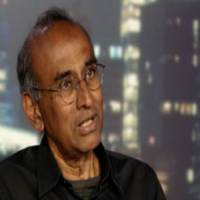
Charles Sykes/Bravo/NBCU Photo Bank via Getty ImagesBy KATIE KINDELAN, ABC News
(NEW YORK) — Glee actress Lea Michele is opening up about postpartum hair loss, shedding light on a health issue that is common for new moms but still not frequently discussed.
“The postpartum hair loss is REAL,” Michele, 34, captioned an Instagram Story earlier this week, sharing a photo of a clump of her hair in her hand.
Alongside a second photo, a selfie, Michele, who gave birth to her son, Ever Leo, in August, with husband Zandy Reich, wrote, “Enjoying this long hair while it lasts because the mom bob is right around the corner.”
While moms like Michele know more and more about what to expect during pregnancy, what happens to their own bodies after giving birth, including hair loss, still remains a surprising occurrence for many.
“Four months postpartum my whole hairline fell out, and now I have a bunch of cowlicks from all the baby hair growing in,” supermodel Ashley Graham told the New York Times in October, nine months after giving birth to her first child, a son. “It can be so heartbreaking when you’re looking at your child, and he’s so healthy and adorable, and then you look at yourself, and you’re, like, what is happening to me? These are things women go through!”
Another new mom, Married at First Sight star Jamie Otis, opened up about her postpartum hair loss in an Instagram post last month, writing, “Here I am completely raw & bare — & balding. I have no makeup, no filter & you can totally see my BALD spots.”
“Postpartum has rocked me to my core, affecting me physically, mentally, & emotionally,” Otis wrote. “I feel like I’m a different person than I was before I had my son.”
While seeing their hair fall out in the months after giving birth can be alarming or traumatic for women, it is normal and in most cases, temporary, according to Dr. Jennifer Ashton, ABC News chief medical correspondent and a board-certified OBGYN.
“It’s not going to be the same for every women but it’s absolutely the norm,” Ashton said of hair loss. “It’s common, but that doesn’t make it any less upsetting for new moms.”
Here are seven things women need to know about postpartum hair loss:
1. Hair goes through three phases, a growth phase followed by a transition phase, where hair stops growing, and then a resting phase, where hair remains the same. At the end of those three phases, hair sheds, causing people to lose as many as 100 hairs a day, and new hair grows, according to Ashton.
The exact reason why this normal process is disrupted by pregnancy is not known, but one theory is that it has to do with a drop in estrogen levels after giving birth, according to Ashton.
2. The peak of postpartum hair loss for most women is usually three to six months after giving birth, said Ashton, also noting that the good news for women is the hair loss is typically just temporary.
“By about one year postpartum, so when you’re celebrating your baby’s first birthday, most moms are back to their baseline,” she said.
3. A woman’s hair type and color pre-pregnancy can affect how much hair they shed in the postpartum stage, according to Ashton.
Women with finer hair and women with hair of lighter colors may notice hair loss much more than women with darker or thicker hair, she explained.
4. Women should talk to their doctor during pregnancy about postpartum hair loss.
“I don’t think many obstetricians or midwives talk about this because they’ve usually stopped seeing the woman as frequently by the time this hair loss occurs,” said Ashton. “[Women have] gotten through their pregnancy, they’ve gotten through the immediate postpartum period that’s three to six weeks or even three months and then they kind of unplug from their provider, their midwife or obstetrician, and then the hair loss happens.”
“I don’t think there’s enough in advance counseling and education going on and it’s really only in hindsight that most moms learn by personal experience that this is so common,” she said.
5. Going easy on hair styling during pregnancy and after can help ease postpartum hair loss, according to Ashton.
She recommends women take it easy on blow drying, styling and even shampooing their hair, including limiting the use of hair bands and hair clips and trying to avoid using weaves and extensions in the hair.
“The more gentle you can be, meaning the less you can do to your hair, the less traction on those hair follicles and strands, the better,” she said.
Women’s continued use of prenatal vitamins can also help with postpartum hair loss, according to Ashton, who noted, “There are a lot of micronutrients in prenatal vitamins that happen to also be great for hair, skin and nails.”
6. Women who lose major clumps of hair may want to see a doctor, explained Ashton.
“Most dermatologists will recommend to check for excessive hair loss, that you just lightly grab your hair, pull it away and see what comes out,” she said. “If you are losing clumps of hair at a time and it’s literally leaving bald patches on your head, then you definitely want to get that worked up from a medical standpoint. Start with your general physician.”
One of the most common areas for women to see postpartum hair loss or breakage is at the front of their foreheads, and that’s completely normal, according to Ashton.
7. Remember to be patient with and kind to yourself during the postpartum period, recommended Ashton.
“This is an incredibly common phenomenon. It is almost always temporary. That doesn’t make it any less upsetting,” she said. “You have every right to be bothered by it.”
“But to take a big picture view, remember what you’ve just done. You’ve just incubated and grown a human and delivered a human. Be patient with yourself,” Ashton added. “Cut yourself some slack and remember as tied in to our hair as many of us women are, that is not what makes you a beautiful woman. It’s all inside. This is just window dressing and it will get better.”
Copyright © 2021, ABC Audio. All rights reserved.















